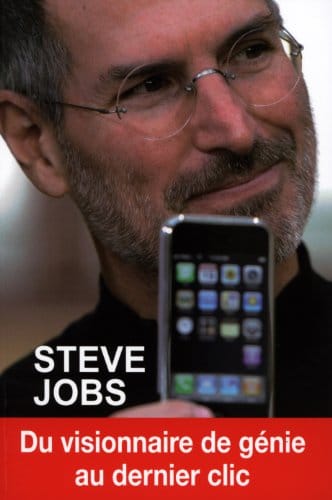Steve Jobs: The Visionary Who Changed Technology Forever
Explore how Steve Jobs revolutionized technology, design, and media through Apple and Pixar, leaving a legacy of innovation that still shapes our digital lives.

Introduction
Few names in modern history evoke as much admiration and intrigue as Steve Jobs. The co-founder of Apple Inc. helped redefine the relationship between people and technology, turning computers, phones, and music players into beautifully designed lifestyle companions. Jobs’ journey from a curious California youth to one of the world’s most influential business leaders is packed with lessons about creativity, perseverance, and daring to think differently.
Early Life and Formative Influences
Steven Paul Jobs was born on February 24, 1955, in San Francisco and adopted by Paul and Clara Jobs. Growing up in Silicon Valley during the dawn of the computer age, he was fascinated by electronics and engineering. His friendship with the technically gifted Steve Wozniak at Homestead High School proved pivotal. Jobs’ early stint at Hewlett-Packard and a transformative trip to India exposed him to both cutting-edge technology and Eastern philosophy, sowing the seeds of his distinctive blend of intuition and innovation.
Founding Apple and the Personal Computer Revolution
In 1976, Jobs and Wozniak launched Apple Computer from the Jobs family garage, introducing the Apple I and later the Apple II. The latter became one of the first commercially successful personal computers, catapulting the fledgling company into the public eye. Jobs’ insistence on user-friendly design and clear marketing narratives set Apple apart from hobbyist-oriented competitors. By 1980, Apple went public and minted millionaires overnight, with Jobs at just 25 becoming a symbol of youthful ambition in the burgeoning tech world.
The Macintosh Moment
Jobs sought to make computing even more accessible with the Macintosh, launched in 1984. Featuring a graphical user interface, mouse, and sleek all-in-one design, the Mac promised to put the power of technology into the hands of ordinary people. The iconic “1984” Super Bowl commercial announced Apple’s break from convention. Although early Mac sales were slower than hoped, the product laid the groundwork for modern personal computing and cemented Jobs’ reputation as a marketing genius.
NeXT, Pixar, and Lessons in Resilience
Internal power struggles culminated in Jobs leaving Apple in 1985. Undeterred, he founded NeXT Computer, aiming to build high-end workstations for education. While NeXT’s hardware never achieved mass adoption, its software innovations—particularly the NeXTSTEP operating system—would later prove invaluable. Simultaneously, Jobs purchased a graphics division from Lucasfilm, renaming it Pixar. By championing computer-animated storytelling, he helped produce blockbuster hits like Toy Story. Pixar’s success showcased his ability to nurture creative cultures beyond traditional tech.
Return to Apple and The Second Act
Apple struggled in the 1990s, and in 1997 the company acquired NeXT, bringing Jobs back into the fold as interim CEO. Leveraging NeXT software to form the basis of Mac OS X, Jobs spearheaded a dramatic turnaround. He streamlined Apple’s product line to focus on four core quadrants: consumer/pro, desktop/portable. His partnership with design chief Jony Ive yielded the translucent iMac G3 in 1998, revitalizing the brand with vibrant colors and plug-and-play simplicity. Apple’s fortunes reversed almost overnight.
The iPod, iPhone, and iPad Era
Jobs believed in creating a “digital hub” for media, leading to the iPod in 2001 and the iTunes Store in 2003. Music consumption was forever changed. In 2007 came the iPhone, a device that fused phone, internet, and iPod into a multitouch masterpiece. Three years later, the iPad extended Apple’s ecosystem to tablets. Each launch rewrote industry rules, triggered new markets, and solidified Apple’s place as a design-led powerhouse.
Leadership Style and Philosophy
Jobs was renowned for his intense focus and perfectionism. Colleagues both feared and revered his famously exacting standards, dubbed the “reality distortion field.” He demanded simple, elegant products and was willing to scrap months of work if a better idea emerged. Jobs also prized end-to-end control—from silicon to software to store shelves—ensuring a cohesive user experience. His annual keynote presentations combined storytelling, theatrical pacing, and genuine excitement, turning product launches into cultural events.
Legacy and Impact on Technology
Steve Jobs passed away on October 5, 2011, but his influence endures. Concepts he championed—touch interfaces, sleek minimalistic hardware, curated app ecosystems—are now industry norms. Apple became the world’s most valuable company, while Pixar set new benchmarks for animated filmmaking. Jobs inspired generations of entrepreneurs to marry technology with liberal arts and to “stay hungry, stay foolish,” as he famously advised Stanford graduates in 2005.
Conclusion
Steve Jobs’ life reminds us that true innovation arises at the intersection of vision, design, and relentless execution. By questioning the status quo and focusing on the user’s emotional connection to technology, he altered the trajectory of multiple industries. Whether you glance at a smartphone, stream a film, or browse a minimalist website, echoes of Jobs’ philosophy are everywhere—proof that one person’s imagination, fueled by passion, can indeed change the world.



